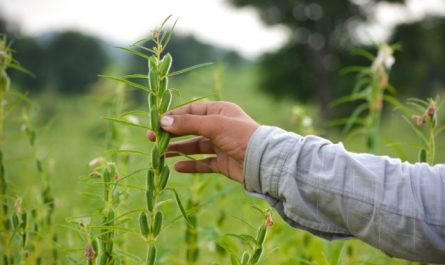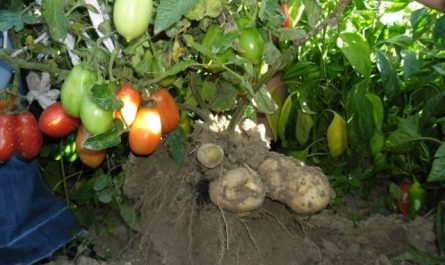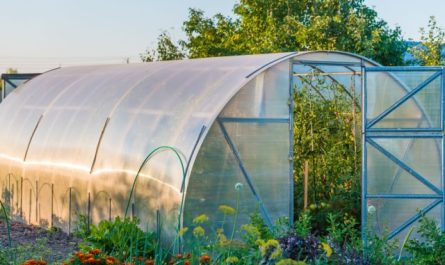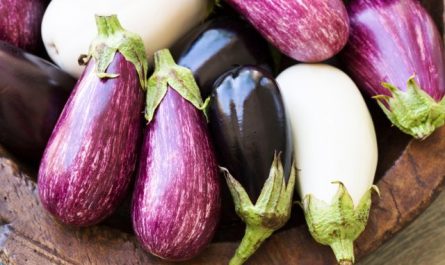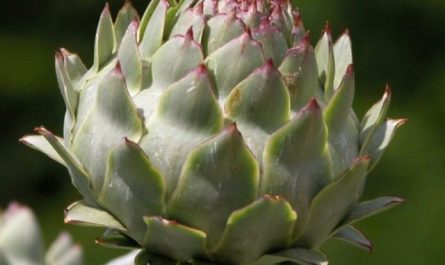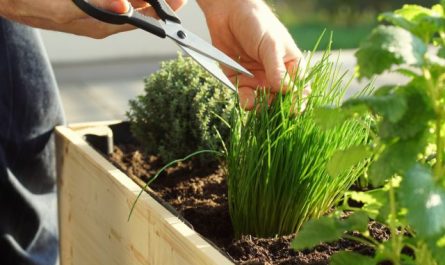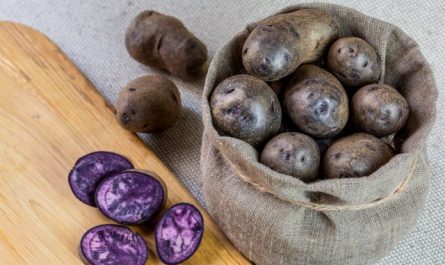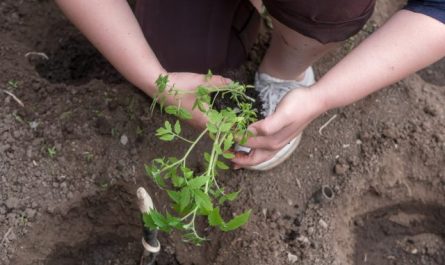The lingonberry season begins in late August and September. The first yellow leaves have appeared on the birches, which means that autumn is already on the doorstep, and the first lingonberries are ripening in the forests. This relationship is a natural signal or phenological sign. Lingonberries are replacing the July gifts of the northern forests – blueberries and bilberries. Until recently, the thick green carpets of lingonberries are transformed and begin to sparkle with clusters of scarlet berries.

We value this berry for its taste and health benefits, we try to prepare various dishes and drinks from it in season, eat it fresh and be sure to stock up on red vitamins for the winter. But what do we know about the details of this plant’s life? What obstacles does the berry bush have to overcome, how does it survive in difficult natural conditions and adapt to difficulties in order to gift us with a valuable harvest in the fall.
Undoubtedly, the lingonberry’s hardened northern character helps it in this. But nature has also gifted the squat shrub with extraordinary plasticity, the ability to preserve its life in difficult times and continue it in its descendants.
Lingonberries are good from any side
Lingonberry (Vaccinium vitis idaea L.) belongs to the lingonberry family, which is included as a subfamily in the heather family. The graceful perennial and evergreen shrub is small in height – from 2,5 to no more than 30 cm; but it is very strong and foldable. Leaves, flowers, and then berries sit tightly on thin stems.
The leaves are long-lived
The lingonberry leaf is leathery, elastic, oval-shaped. The upper surface of the leaf, depending on its age, is green or dark green, shiny, with a pattern of veins. The edges of the leaf blade are slightly curled downwards. The lower side is matte, lighter, grayish. On it you can see many small dark dots that play an important role in the life of the plant.
The bushes do not shed their leaves in winter, they turn green under the snow. The leaves serve the plant for 2-4 years, then they are replaced by others. Often, black, brown or unusually bright red foliage can be observed in the lingonberry bush. This can be a consequence of diseases, fungal and viral damage, as well as natural aging, which in some leaves occurs brightly – they turn an unusually crimson before falling.
From flowers to berries
In spring and early summer, the white-pink, densely flowered lingonberry brushes are incredibly attractive. The flowers resemble lily-of-the-valley bells in shape, only smaller, with a pinkish tint and a barely noticeable scent. It happens that up to 20 of them are collected in a brush, and the lower flowers are larger than the upper ones. Small bells, rich in sweet nectar, provide food for bees and bumblebees for 20-30 days. Blooming wild lingonberry impresses with its delicate beauty.

The berries of the lingonberry match the leaves – round, elastic, also glossy. They overwinter under the snow cover to the delight of wild animals. The clusters of berries resemble bunches of grapes. Perhaps due to this similarity, the Dutch botanist Dodonaeus gave the lingonberry the species name vitis idaea or “vine from Mount Ida”.
The green berries turn white, gradually begin to fill out and blush. The delicate coral color as they ripen turns into a rich dark red, which we call nothing less than lingonberry.
An ideal place for berry bushes
The common lingonberry is still the leader in natural reserves among wild berries. Its main lands are located in northern and close to them latitudes. Lingonberry prefers coniferous and mixed light forests, tundra, taiga, pine forests, forest clearings and glades, heather glades, mountainous terrain, and sometimes swamps.
The shrub prefers a cold climate and tends to the north. At the same time, the range of requirements for natural habitat conditions of the plant is small. It can grow on sand and in a swamp, is undemanding to the richness of the soil, but will only populate very acidic ones. The need for moisture is modest, but does not like its excess. But lingonberry cannot live without the sun. Without sufficient light, it refuses to bear fruit, withers, although it tolerates light partial shade. In moderately humid, open places, with sufficient nutrition, lingonberry yields are much higher.
Where to find lingonberries in the forest
In order to grow and reproduce, the shrub needs to dominate among soil plants in the grass-shrub layer. In sparse forests, on forest edges, it is easier for lingonberry to grow. The lingonberry shrub happily masters clearings with half-decomposed wood remains, rotten stumps, deadwood. It vigorously captures clearings, competing with other plants. Rotting wood, decomposing organic matter feeds the plant.

Her favorite companion is the pine. In cozy, light pine forests, the fruits are not as large as in damp places, but they are considered the most useful and delicious.
Amazing abilities of lingonberry
It is hard to believe that lingonberry can live up to 100 years or more. Thanks to the characteristics of its roots, stems and leaves, the plant has learned to steadfastly endure hardships, to survive in harsh areas where others cannot exist, only lichens. Curious biological advantages help the shrub to adapt to various living conditions and territories where fate brings it.
Mushrooms instead of a spoon
In order to receive and assimilate nutrition, lingonberry “made friends” with soil fungi, forming mycorrhiza with them. The plant’s roots are located in the most “delicious” place – the litter horizon, but lack suction hairs. Instead, they are penetrated by fungal hyphae. Fungi supply the plant with nutrients, and in return take away some of the sugars. In the rhizomes, the plant stores provisions in the form of starch grains. Thanks to such symbiosis and foresight, the shrub survives and feeds its numerous colony.
Movement is life
If you don’t like the place, the lingonberry will move to a new one, fortunately the lingonberry bush is vegetatively mobile. The creeping, cork-covered rhizome lies in the soil not very deep, from 5 to 10 cm, but can grow several kilometers in width. New rhizomes grow from dormant buds located in the axils of reduced leaves. But more often, erect young shoots coming from the base of the mother bush. This is how the lingonberry populates new territories.

The mobile shrub even moves from too damp places to drier ones, climbing hummocks and hills. In dark forests and dense grass conditions, the underground life of the plant is more vigorous. Underground shoots grow stronger than aboveground ones in search of sun and free space to come out into the light. Under unfavorable conditions, lingonberry rhizomes move deeper into the soil than usual. Therefore, forest fires are not particularly scary for it; it will rise again from the ashes in the same place.
A rotten deadwood, a half-rotten tree or a stump are not an obstacle for strong woody stems of lingonberry. It will stubbornly make its way through old wood, growing shoots almost up to a meter, and will go on to develop the territory, where the bush will then take its usual height from 8 to 30 cm, depending on the illumination of the place and the fertility of the soil.
Leaves are not only for photosynthesis
Nature has also gifted lingonberries with special foliage. The hard, glossy leaves shine as if they were rubbed with wax. And this is indeed the case. But in addition to waxes, an organic wax-like substance called cutin plays an important role in covering the leaf blade. It creates a protective layer on the leaf surface, a cuticle, which retains moisture, preventing its evaporation. Additionally, it protects the plant from mechanical damage, temperature fluctuations, attacks by small insects, reflects ultraviolet light and serves as a barrier against infections. Moreover, the skin of the berries protects the fruits in a similar way.
The cuticle is waterproof, but the peculiarities of the structure of the lingonberry leaf allow the plant to retain moisture during dry periods, absorbing water not only through the roots, but also through the leaves. Thanks to the curled edge of the leaf blade, water gets to the underside of the leaf, dotted with dark dots. These dots are special glands, in the middle of each of which there are bodies that have the ability to absorb moisture. Rainwater or dew, falling on the underside of the leaf, is absorbed by the plant.
Lingonberry, like many heathers, reacts dynamically to the weather. When a severe drought occurs, it curls its leaves and minimizes contact with the environment, saving energy. In frosts, the life processes of the wintering evergreen shrub do not stop, the synthesis of starch from sugars continues. Lingonberry does not part with its leaves even in the coldest years, so in severe winters with little snow, lingonberry bushes suffer losses.
A nomad against his will
Nature has endowed this small shrub with remarkable endurance, unpretentiousness, and mobility. But lingonberry lands do not tolerate invasions into their territory. They suffer from industrial logging, which completely destroys the soil cover. Lingonberry forests degrade and disappear. And their restoration takes 20-30 years.
Over time, favorable places for lingonberries naturally change for the worse. The rare light forest matures, grows taller and becomes denser. The light intensity decreases. Competitor plants and thick grass cover push sun-loving lingonberries out of their favorite places. The plant has to migrate from place to place in search of something better. And the further north and colder it is, the easier it is for the shrub colony to develop new spaces.
Family longevity
Lingonberry reproduces by seeds and rhizomes. The capricious seeds need many conditions for germination: a place free from thick grass or moss, damp and without an abundance of sunlight. Lingonberry cannot boast of the number of seeds in the fruits, while they have a low germination rate and weak germination energy. In addition, the berries are eaten by birds, animals and us. Therefore, natural seedlings are rare.

For successful vegetative propagation, conditions are minimal, and the dense lingonberries expand thanks to powerful rhizomes. One plant gives life to several dozen offspring per year, forming extensive clones.
The life of lingonberry can be much longer than that of a human. All thanks to the cord-like rhizomes. Individual clumps or colonies, consisting of several dozen bushes of different ages and connected by rhizome highways, can live up to several hundred years. The long-lived root, constantly growing and renewing itself, gives life to new individuals, but their age is not so respectable – on average 5-15 years.
Berry whims
In the best case, only from the fifth year of life, lingonberry begins to bear fruit under the most favorable natural conditions, and the harsher and colder they are, the slower the plants mature. It can take from 10 to 20 years before the first flowering. Lingonberry works on the formation of flowers for more than a year before the fruits ripen. The process begins in May-June. In August, you can see the beginnings of future buds that will bloom the following spring.

Not every year does the lingonberry please with a rich harvest, after abundant fruiting it takes a couple of years to rest. But how pleasant it is to collect it! You find a hummock rich in berries, scatter the branches so that your knees don’t hurt and collect them in bunches.
In a ripening lingonberry bush in a fruitful year, it happens that you don’t know where to put your foot so as not to crush the precious berries, so abundantly does it bear fruit. Although lean times happen more often.
During the rainy, cool flowering period, most of the flowers remain unpollinated. It is possible that the lingonberry harvest is also affected by the weather conditions of the autumn-summer period and winter of the current year. Lingonberry is sensitive to the amount of precipitation and heat. If it is unhappy with something, it will save its strength and will not bear fruit. But we do not have a clear idea about this yet.
In summer, during prolonged rainy weather, disasters often occur in lingonberry patches: microscopic fungi attack the still-forming, defenseless berries, and most of the harvest rots.
However, it has been established that lingonberry needs cold and snow for abundant fruiting. Low temperatures and snow cover are important conditions for the flower to turn into a berry. Severe frosts down to -40 °C are nothing to lingonberry and even necessary. Due to its small growth and the peculiarity of its foliage, it patiently survives winters with little snow, and prolonged cold weather only contributes to the development of generative organs and, accordingly, the berry harvest.
Medicinal leaf
Lingonberry leaf is rightfully considered a valuable medicinal raw material. A decoction of fresh leaves is recognized by the people as one of the best remedies for rheumatism, and an infusion is irreplaceable for kidney diseases.
Tea made from lingonberry leaves will curb your turbulent intestines, calm your stomach and restore your “tired” liver.
Lingonberry tea is useful for people of all ages. Drinks from fresh or dried leaves:
- enrich the body with vitamins without putting a strain on the kidneys,
- remove excess fluid,
- have anti-inflammatory and bactericidal effects.
10 Secrets of Berry
Lingonberries ripen slowly, without rushing. From the beginning of flowering to the ripening of the berries, at least two months pass, or even more. It is high time to pick lingonberries when almost the entire bunch is decorated with ruddy berries. Only the fruits ripened on the bush will reveal their true taste.
You can’t catch any special sweetness or aroma in lingonberries, their taste is interesting and ambiguous. Under the dense shell is hidden a refreshing tart juice with a bitter taste and sourness. Each berry is not only pleasant to taste, it is also a storehouse of substances useful for the human body.

In addition to sugars, lingonberries contain:
- a large set of organic acids, with a predominance of citric and malic;
- natural antioxidant – benzoic acid, which also has an antiseptic effect;
- bioflavonoids with high P-vitamin activity;
- biologically active compound betaine, which reduces cholesterol and protects the body from fatty degeneration of the liver;
- vitamins with ascorbic acid as the leading component;
- carotene, which is found in lingonberries in greater quantities than in lemons;
- an unusually rich composition of mineral elements (more than two dozen), in which potassium, sodium, phosphorus, iron, magnesium, calcium, and manganese predominate;
- pectin substances, essential for problems with the gastrointestinal tract;
- high molecular weight alcohol, phenols, aldehydes, ketones and other complex and useful compounds;
- biologically active components with a wide range of therapeutic and preventive properties (from colds to oncology).
Fresh ripe lingonberries will last a long time in normal room conditions, remaining juicy and tasty. They are protected from spoilage by cutin, contained in the skin, and benzoic acid. The riper and redder the berry, the more protective and useful benzoic acid accumulates in it, but in unripe fruits it is not enough.
If picked unripe, white-sided and especially green berries will not ripen on the tray: they will turn black or rot. Pink berries have a chance to ripen, but their taste and quality will be inferior to those that have filled out on the bush. Moreover, having turned red, they can still spoil in preparations, for example, in soaked lingonberries.
Cranberry juice has powerful antibacterial and antimicrobial properties, and not only freshly squeezed. Juice stored for up to six months or more retains these properties. Its antimicrobial activity does not decrease after preservation and freezing. The berries retain their benefits even after heat treatment. They are especially useful for treating gastritis with low acidity.
In the old days, valuable berries were collected and prepared in huge quantities starting from Lupa-brusnichnik day, September 5. They were put into barrels, filled with spring water and put away in the cellar. By the beginning of winter, the lingonberry water was infused. This is how they got a tasty and very useful drink for various ailments.
